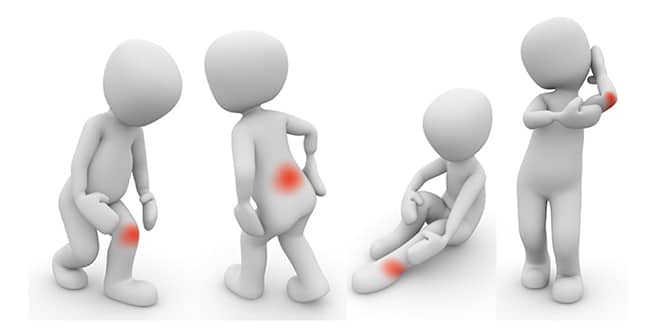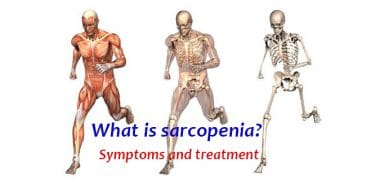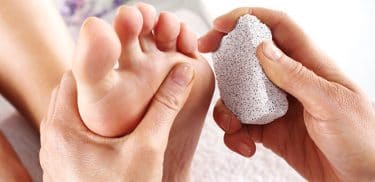Physical therapy and rehabilitation is a medical specialization that treats problems of movements and functional abilities. Rehabilitation programs require active participation of patients in order to have a more comfortable and rapid recovery period. Physiotherapy and physical therapy are the same thing. Physiotherapists (Physical therapists) are specialists who implement effective methods in the diagnosis and treatment of serious problems such as illnesses, injuries, disabilities. Physical therapy is a part of treatments of many problems, such as brain damage, stroke, Multiple Sclerosis, chronic pain and sports injuries.
Table of Contents
Physical therapy and rehabilitation
Physiotherapy and rehabilitation are interchangeably used terms. However, their meanings are different. Rehabilitation is a process of reforming something. It can be a part of any comprehensive treatment program. Physiotherapy is a type of rehabilitation that focuses on physical strength and movement. Both aim to fasten the recovery process.
Physical therapy and rehabilitation help treat the following diseases:
- Bones, joints and soft tissue problems: Chronic pain (back, neck, shoulder pain, etc.), injury and trauma (sports injuries, burns, bone fractures, spinal injuries)
- Brain or nervous system diseases: Stroke, MS (Multiple Sclerosis) or movement problems caused by Parkinson’s disease, traumatic brain injury
- Heart and circulation problems: Heart attack
- Lungs and respiratory diseases: Chronic obstructive pulmonary disease (COPD), cystic fibrosis, asthma
- Severe infections
- Major surgeries
- Side effects of medical treatments such as cancer treatments
- Some birth defects and genetic disorders
- Developmental disabilities
What is Physical therapy?
Physical therapy (Physiotherapy) is a medical branch that helps people regain their strength after an illness or injury, improve the physical functions and movements of people with disabilities, raise and maintain their overall health level. Physiotherapy:
- Helps you become stronger and more flexible.
- Increases your freedom of movement and ability.
- Makes you breathe easier.
- Reduces your pain.
- Increases your mobility and keeps you active.
- Prevents injuries.
What is rehabilitation?
Rehabilitation is a complementary treatment that helps restore or improve physical, mental and/or cognitive abilities lost due to an illness or injury or as a side effect of a treatment. Additionally it can also be used for the management of long-term health conditions such as Parkinson, MS. Rehabilitation helps:
- Treat the main disease and prevent complications,
- Treat disability or improve functioning,
- Adapt to artificial limbs and change the patient’s environment accordingly,
- Patients and their families adapt to lifestyle changes by training them.
The rehabilitation team or physiotherapist sets both short and long term goals for each problem. In most cases, goals aim at helping people walk again. They help with daily activities the patient needs to do (such as dressing, personal care, bathing, cooking and shopping).
The ultimate goal is to improve the quality of life, reduce the level of dependence on others, and ensure a safe return to society.
What conditions can physiotherapy treat?
Physiotherapists focus on both prevention and treatment practices. Some diseases that physiotherapy treats:
Orthopedic problems
Orthopedic physiotherapy is a part of the treatment of musculoskeletal diseases such as sprains, back and lower back pain, arthritis, strains, urinary incontinence, bursitis, posture problems, sports and workplace injuries, as well as decreased mobility. Post-operative rehabilitation is also listed in this category. (1)
Physiotherapeutic treatment methods can relieve pain or eliminate pain completely. It can restore the function of muscles and joints. Removing pain or healing the wound with physiotherapy reduces the need for surgical intervention.
Physiotherapists are also aware of the specific risks of injury to which different sports can pose. They can design appropriate treatments and disability prevention practices to ensure safe return to sports. (1)
Neurological problems
Physiotherapy works well for loss of mobility due to nervous system disorders, including stroke, spinal cord injuries, brain injuries, MS and Parkinson’s disease. (2)
Physiotherapy strengthens the weakened parts of the body, improves gait and balance. Physiotherapists assists paralyzed patients to be more independent at home and their surroundings by improving their ability to move, and reduce the need for care for their daily life activities such as toilet, bathroom, dressing. (3)
Diabetes and vascular conditions
As a part of the diabetes management plan, exercise helps control blood sugar tremendously. People with diabetes may experience numbness in their legs and feet. Physiotherapists provide appropriate care and training to these patients to prevent and solve such problems.
Heart and lung diseases
Both physical therapy and rehabilitation help treat asthma, chronic bronchitis, emphysema, and other cardio-respiratory disorders. Patients undergo heart rehabilitation after a heart attack or a procedure, or take physiotherapy for functional disorders.
Physiotherapeutic strengthening, conditioning and breathing exercises can improve patients’ quality of life in lung problems such as asthma and COPD. Physiotherapy can also help clear the fluid in the lungs.
Balance problems
At the beginning of physiotherapy, the risk of falling is checked. If you have a high risk of falling, physiotherapists will assist you with balance and coordination-enhancing exercises and devices that support your walking. If there is an imbalance, physiotherapists can perform special maneuvers that can quickly repair vestibular function, reduce or eliminate dizziness symptoms.
Aging-related problems
Aging may cause arthritis, osteoporosis, and old people may need joint prostheses. Physiotherapists assist them in adapting to the joint prosthesis and managing arthritic or osteoporotic conditions.
Physiotherapy can also provide special treatments for intestinal incontinence (gas and fecal incontinence), breast cancer, constipation, fibromyalgia, lymphedema, male pelvic health, pelvic pain, and urinary incontinence problems. It can help manage women’s special conditions such as pregnancy and postpartum care.
Physiotherapy is also a part of cancer treatment or palliative care due to fatigue, pain, swelling, stiffness and loss of muscle strength.
Physical therapy methods
Treatments are designed for each individual for their specific needs.
Manual treatments
Manual therapy is a technique that a physiotherapist uses his/her hands to manipulate, activate and massage body tissues. Physiotherapists receive training that includes techniques used by chiropractors, osteopathy, massage therapists, and kinesiologists. (4)
- Deep tissue massage: Specifically targets at strains or sprains and muscle tension caused by more serious causes. Physiotherapist exerts pressure to release tension in muscles and other soft tissues. It is applied in order to reduce pain and stiffness, increase blood circulation, improve movements, and promote relaxation.
- Hot and cold treatments: Depending on your condition, the physiotherapist switches between hot and cold treatments. Heat therapy increases blood flow and provides more oxygen to the target area, while cold therapy slows circulation, reduces inflammation and pain.
Exercise programs
Physiotherapists prepare exercise programs such as muscle strengthening, posture training, cardiovascular stretching. These are:
- Exercises designed to increase movement and strength in a particular area of the body,
- Activities that involve moving your entire body, such as walking or swimming,
- Exercises to be done in warm, shallow water (hydrotherapy or water therapy),
- Exercises that will help you increase or maintain your physical activity.
Electrotherapy techniques
- Transcutaneous electrical nerve stimulation (TENS): A TENS machine stimulates muscles at different electrical current densities. This therapy can reduce muscle spasms and also increase the production of endorphin, one of the hormones that make people feel good.
- Ultrasound: Ultrasound improves blood circulation, helps reduce swelling, stiffness and pain by sending deep sound waves to muscle tissues.
- Acupuncture: It is the technique of inserting thin needles on certain parts of the body in order to reduce pain and support healing.
Correct sitting and posture are also a part of customized physiotherapy treatment. Practicing these healthy habits can help get rid of chronic pain and other symptoms.
How is physical therapy practiced?
During the first therapy session, the physiotherapist examines and evaluates the needs of the patient. He/she asks about the pain or other symptoms, the ability to do or carry out daily chores, how well the patient sleeps, and his/her medical history. (5)
Physiotherapeutic measurement tests:
- ability to move, stretch, twist or grasp,
- ability to walk and climb stairs,
- heartbeat or rhythm while active,
- posture and balance.
Customized treatment plan that physiotherapist designs with the patient includes helpful exercises and other treatment applications. Besides, auxiliary devices are prescribed to support moving when necessary.
Who is a physical therapist (Physiotherapist)?
Physiotherapists are highly trained healthcare professionals working on the treatment and prevention of pain and dysfunctions caused by injury, illness and aging. Their tasks include:
- Assessing the patient’s physical condition to diagnose problems and implement a treatment plan,
- Training patients to walk again,
- Helping patients cope with crutches, walking aids or wheelchairs,
- Training patients, their families and the community in general to help people maintain healthy lifestyles.
In some cases, physiotherapists are asked to plan and implement social fitness programs.
How to become a physiotherapist?
A physiotherapist is a university graduate of a 4-year bachelor’s program in Physiotherapy and Rehabilitation department. During this education, students take various theoretical and applied courses such as science courses in anatomy, physiology, physics as well as basic medical courses in neurology, internal medicine, orthopedics and occupational courses in hydrotherapy, massage, exercise techniques, and athletic health.
Physiotherapists who can work in public and private hospitals after graduation may specialize in areas such as children, orthopedics, neurological diseases or sports injuries.




